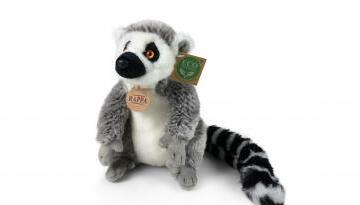Monitorujeme 1675 zdrojov

 Google Dooles 05.07.2021 05:45
Date: June 28, 2021
Today’s Doodle, created by Kanien’kehá:ka guest artist , celebrates Mary Two-Axe Earley, a Kanien’kehá:ka woman from Kahnawà:ke, Mohawk Territory, situated on the southern shore of the Saint Lawrence River across from Montreal. Two-Axe Earley fought for over two decades against sex discrimination in the Indian Act, which stripped First Nations women of their Indian status if they married non-Indian men. On this day in 1985—nearly two decades after Mary began her fight against sex discrimination in the Indian Act—the Parliament of Canada passed Bill C-31, an amendment to restore Indian status to women who had lost it through marriage.
Mary Two-Axe Earley was born on October 4, 1911 on the Kahnawà:ke Reserve. At 18, she moved to New York, where she married an Irish-American engineer. Under the provisions of Canada’s Indian Act, her marriage to a non-Indigenous man meant the loss of her Indian status.The Indian Act of 1876 defines who is an “Indian” and who can belong to an “Indian band” . The federal government targeted First Nations women, stripping them of their Indian status if they married a non-Indian man. These laws banned First Nations women and their children who lost their status from living in their communities, denying them access to critical social programs and voting rights in their community, and severing their ties to identity and culture. Thousands of First Nations women affected by this legislation are still waiting to be recognized by Canada.
In 1967, Two-Axe Earley founded the Equal Rights for Indian Women organization. For decades, she fought for First Nations women’s rights through associations, impassioned speeches, and letter campaigns. Her perseverance, along with other First Nations women, paved the way for the 1985 repeal of Indian Act provisions, which restored Indian status to thousands of First Nations women. One week later, Two-Axe Earley became the first woman to have her Indian status reinstated. The Bill was effective April 17, 1985, but the movement for sex equality continues today.
In addition to an honorary doctorate and a position among the first members of the Order of Quebec, Two-Axe Earley received a National Aboriginal Achievement Award in 1996 for her lifetime devotion to human rights.
Thank you, Mary Two-Axe Earley, for your unyielding dedication to the rights of First Nations women and their children!
Guest Artist Q&A with Star Horn
Today’s Doodle was illustrated by Kanien’kehá:ka guest artist . Below, she shares her thoughts behind the making of this Doodle:
Q. Why was this topic meaningful to you personally?
A. We both come from the same community. My personal experience was that her story was not taught in school nor anywhere else. For me to have such a small part in helping bring her impactful story to the world, in a visual way, is an honour.
Q. What were your first thoughts when you were approached about working on this Doodle?
A. Initially I thought it was some sort of spam or joke and almost trashed the email I'm not famous or anything, so I had doubts as to this being a real opportunity. Then later when everything was in full swing of creating it, I realized how public, how so many people would be viewing it. It became a mixture of fear and excitement. I think Mary is way past due having her name and story told.
Q. Did you draw inspiration from anything in particular for this Doodle?
A. There are so few images or videos of her anywhere, but Courtney Montour's documentary was a great inspiration. She worked for over 4 years to gather together her story and bring her back to life on film which was amazing. I saw very old clips of her, sitting at her kitchen table talking, in a little house in Kahnawake, just like my very own tota would have been. It reminded me of how hard some of those women had to work, raising families, and holding so much responsibility.
I was also inspired by our traditional beadwork and art. I wanted to incorporate symbols and images that were meaningful and beautiful to us, to show everyone that we still hold this incredible ability to create our own visual language and that it is important to keep sharing that. All of Mother Earth, nature, and more is incorporated into our art and regalia. We still make and wear those symbols signifying the inextricable connectedness that everyone has with nature . There is such a resurgence of Indigenous design/fashion and art on the world stage right now, it's so incredible to see ourselves starting to be reflected in mainstream media, pop culture and beyond. And by reflected I mean that Indigenous artists are gaining that mainstream stage themselves.
Q. What message do you hope people take away from your Doodle?
A. First and foremost, I want her name to be associated with the legal change she and her allies brought about for all Indigenous women across the country. Also, I want people to know how that affected non Indigenous women and rights as well. I also want them to see her as the smart, sweet, strong, Kanienkehaka matriarch that she was, and that she was from Kahnawake! I want the Kanienkehaka youth to learn about her, to take pride in her story, and to know that they too can make significant changes in the world, or their community, or even just for their own selves and family.
Early drafts of the Doodle below
Location:
Tags:
,
,
,
,
,
Google Dooles 05.07.2021 05:45
Date: June 28, 2021
Today’s Doodle, created by Kanien’kehá:ka guest artist , celebrates Mary Two-Axe Earley, a Kanien’kehá:ka woman from Kahnawà:ke, Mohawk Territory, situated on the southern shore of the Saint Lawrence River across from Montreal. Two-Axe Earley fought for over two decades against sex discrimination in the Indian Act, which stripped First Nations women of their Indian status if they married non-Indian men. On this day in 1985—nearly two decades after Mary began her fight against sex discrimination in the Indian Act—the Parliament of Canada passed Bill C-31, an amendment to restore Indian status to women who had lost it through marriage.
Mary Two-Axe Earley was born on October 4, 1911 on the Kahnawà:ke Reserve. At 18, she moved to New York, where she married an Irish-American engineer. Under the provisions of Canada’s Indian Act, her marriage to a non-Indigenous man meant the loss of her Indian status.The Indian Act of 1876 defines who is an “Indian” and who can belong to an “Indian band” . The federal government targeted First Nations women, stripping them of their Indian status if they married a non-Indian man. These laws banned First Nations women and their children who lost their status from living in their communities, denying them access to critical social programs and voting rights in their community, and severing their ties to identity and culture. Thousands of First Nations women affected by this legislation are still waiting to be recognized by Canada.
In 1967, Two-Axe Earley founded the Equal Rights for Indian Women organization. For decades, she fought for First Nations women’s rights through associations, impassioned speeches, and letter campaigns. Her perseverance, along with other First Nations women, paved the way for the 1985 repeal of Indian Act provisions, which restored Indian status to thousands of First Nations women. One week later, Two-Axe Earley became the first woman to have her Indian status reinstated. The Bill was effective April 17, 1985, but the movement for sex equality continues today.
In addition to an honorary doctorate and a position among the first members of the Order of Quebec, Two-Axe Earley received a National Aboriginal Achievement Award in 1996 for her lifetime devotion to human rights.
Thank you, Mary Two-Axe Earley, for your unyielding dedication to the rights of First Nations women and their children!
Guest Artist Q&A with Star Horn
Today’s Doodle was illustrated by Kanien’kehá:ka guest artist . Below, she shares her thoughts behind the making of this Doodle:
Q. Why was this topic meaningful to you personally?
A. We both come from the same community. My personal experience was that her story was not taught in school nor anywhere else. For me to have such a small part in helping bring her impactful story to the world, in a visual way, is an honour.
Q. What were your first thoughts when you were approached about working on this Doodle?
A. Initially I thought it was some sort of spam or joke and almost trashed the email I'm not famous or anything, so I had doubts as to this being a real opportunity. Then later when everything was in full swing of creating it, I realized how public, how so many people would be viewing it. It became a mixture of fear and excitement. I think Mary is way past due having her name and story told.
Q. Did you draw inspiration from anything in particular for this Doodle?
A. There are so few images or videos of her anywhere, but Courtney Montour's documentary was a great inspiration. She worked for over 4 years to gather together her story and bring her back to life on film which was amazing. I saw very old clips of her, sitting at her kitchen table talking, in a little house in Kahnawake, just like my very own tota would have been. It reminded me of how hard some of those women had to work, raising families, and holding so much responsibility.
I was also inspired by our traditional beadwork and art. I wanted to incorporate symbols and images that were meaningful and beautiful to us, to show everyone that we still hold this incredible ability to create our own visual language and that it is important to keep sharing that. All of Mother Earth, nature, and more is incorporated into our art and regalia. We still make and wear those symbols signifying the inextricable connectedness that everyone has with nature . There is such a resurgence of Indigenous design/fashion and art on the world stage right now, it's so incredible to see ourselves starting to be reflected in mainstream media, pop culture and beyond. And by reflected I mean that Indigenous artists are gaining that mainstream stage themselves.
Q. What message do you hope people take away from your Doodle?
A. First and foremost, I want her name to be associated with the legal change she and her allies brought about for all Indigenous women across the country. Also, I want people to know how that affected non Indigenous women and rights as well. I also want them to see her as the smart, sweet, strong, Kanienkehaka matriarch that she was, and that she was from Kahnawake! I want the Kanienkehaka youth to learn about her, to take pride in her story, and to know that they too can make significant changes in the world, or their community, or even just for their own selves and family.
Early drafts of the Doodle below
Location:
Tags:
,
,
,
,
,
NEWS.SK odporúča
Top firmy
Nie sú nájdené žiadne články.
Nie sú nájdené žiadne články.


















